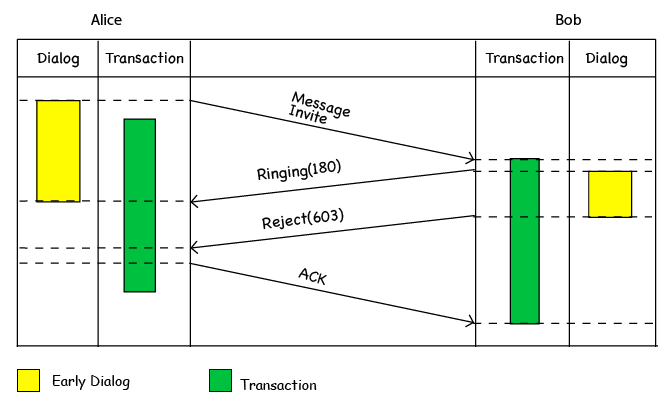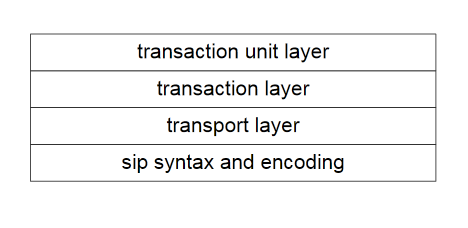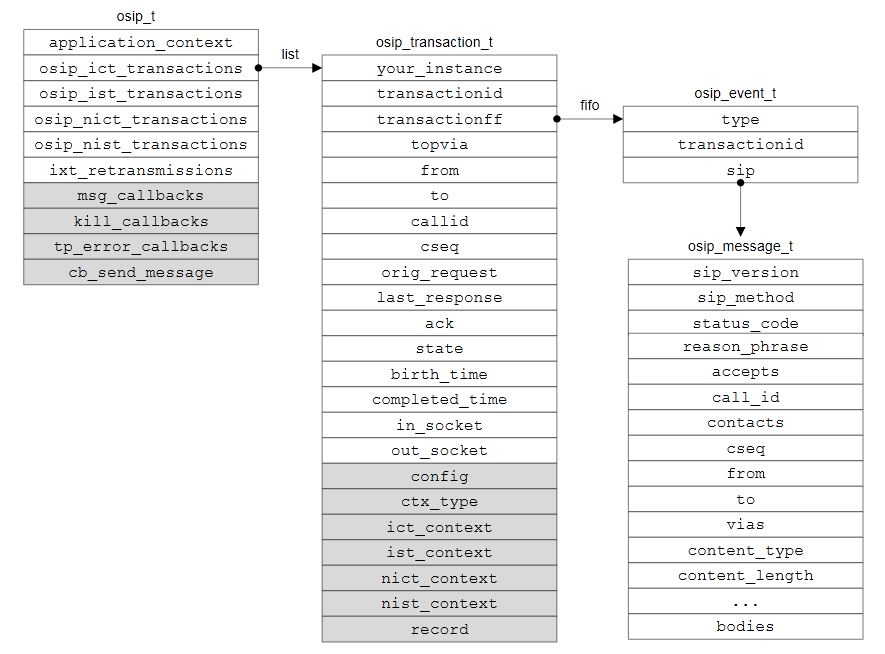What is SIPSIP Protocol is one of widely used signaling protocol, with the main purpose of, as its name is abbreviated for, initialization session between several participants. Due to its nature, it's mainly used in VOIP, IM applications.
Basics of SIPBecause SIP is always mentioned together with other multimedia application protocols such as
SDP,
RTP. They are so mixed up that easily confuse beginners, like me. To make things clear, it's necessary to know SIP has nothing to do with those protocols. It can be used independently with SDP and RTP. SIP is just being lucky to be employed to work with them in many situations.
In short, their relationship is:
SDP describes the capabilities and preferences of a participant. Usually, it's included in the payload of SIP message.
SIP is the message flow that enable two or more participants to negotiate, setup, modify and terminate a session.
RTP is the protocol for transferring audio or video data after the session has been established, it usually relies on the information contains in SDP.
SIP is a text based protocol with request/response transaction model, similar to
HTTP. Unlike HTTP, whose request and response always comes in pairs, SIP's request and response doesn't hold a one on one relationship. A SIP transaction may have multiple request and multiple response.
The format of SIP message is similar to HTTP's too. A message is composed of a start-line(includes method, request-uri and sip-version), several headers and a message body.
Like
SMTP, the recipient of a message doesn't have to be directly accessible to the sender. A message may hop several times before it reaches the destination with the help of Proxy Server.
To better understand SIP protocol, the document
SIP Protocol Structure through an Example provides a thorough illustration and it's good material for getting start.
SIP LibrariesPJSIP is a powerful sip library implemented in c. Besides SIP, it also support SDP, and has strong multi-media processing capability. It exposes APIs at different layers so that users can pick either a convenient or flexible API set at their will. It's also a highly portable library can run many operating systems, including windows and linux. The best thing is it has complete document which is rare in open source project.
MJSIP is a java based sip library with SDP, RTP supporting. It's also a convenient and complete solution for building VOIP application. But I'd say the library still have room to improve the quality, for there are some apparent spelling mistakes.
OSIP is part of of gnu project, implemented in c. By following the "do one thing, and do it well" philosophy, it solely focus on SIP and is a light weight, fast library.
References:http://www.ietf.org/rfc/rfc3261.txthttp://en.wikipedia.org/wiki/Session_Description_Protocol http://en.wikipedia.org/wiki/Real-time_Transport_Protocol



